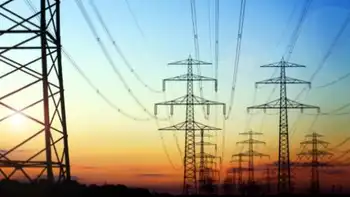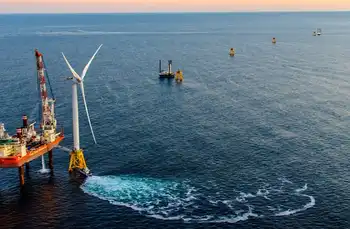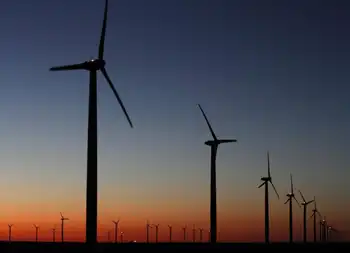Energy security driving IndiaÂ’s low CO2 plan
By Reuters
Arc Flash Training CSA Z462 - Electrical Safety Essentials
Our customized live online or in‑person group training can be delivered to your staff at your location.

- Live Online
- 6 hours Instructor-led
- Group Training Available
Reserves of fossil fuels such as coal were fast running out, making it imperative for India to improve efficiency and accelerate renewable energy sources to keep the economy growing at a projected 8 to 9 percent annually, Kirit Parikh said.
India, the world's fourth-largest carbon emitter, is under pressure to cut pollution in the fight against climate change. While per-capita emissions are still low, demand for electricity and fossil fuels is increasing as the middle class clamors for more cars, TVs and better housing.
"If the Indian economy is not concerned at all with climate change... and follows the business-as-usual path, the reality is even in business-as-usual we have to change from what we are today," Parikh told Reuters in an interview.
"These are your imperatives in any way from your energy security point of view because we are very short of oil, very short of gas.
"We need to find in the next 20, at the most 30 years, an alternative to coal-based power plants. That will be required in a business-as-usual scenario."
In India, any talk of a low-carbon economy was once seen as politically very risky, given the economic costs involved. But Prime Minister Manmohan Singh in January asked Parikh to begin charting a path to a greener economy.
The panel's preliminary report is due next month and the final submission in September.
Although India has announced a new climate plan which identifies renewable energy, such as solar power, as a key element, coal remains the backbone of energy supply in a country where almost half the 1.1 billion population has no access to electricity.
The country has 10 percent of the world's coal reserves, the biggest after the United States, Russia and China. Most of India's coal is inferior in quality and highly polluting.
About 70 million tons of coal is imported each year, mostly for making steel.
India plans to add 78.7 gigawatts of power generation during the five years ending March 2012, most of it from coal, which now accounts for about 60 percent of the nation's energy mix.
By comparison, renewables such as wind, solar and biomass contribute only 8.8 percent to generation and, though there are plans to scale up solar power generation to 20 gigawatts by 2022, it depends on international finance and technology.
A landmark nuclear deal with the United States might herald a new chapter in clean energy in India, but long planning and building periods for nuclear reactors and high cost are deterrents.
Parikh said given the dependence on coal, the only way forward was to enhance the efficiency of coal-based power plants by using technology such as super-critical boilers which would help cut coal use by about 20 percent.
"In 10 years' time, half of my plants should be more efficient. In another 10 years, 75 percent of the plants should be more efficient," he said.
India last year set a goal for slowing the growth of its emissions, saying it will try to rein in its "carbon intensity" — the amount of carbon dioxide emitted per unit of economic output — by between 20 and 25 percent by 2020, from 2005 levels.
Parikh said the target was achievable without a major shift in policy keeping in view the fact that India's energy intensity — the amount of energy used to produce one unit of GDP — has been coming down.
He said it was too early to estimate the economic cost of shifting to a low-carbon economy and the panel would initially only identify areas of opportunities such as in the power, transport and construction sectors.
Parikh said increasing energy efficiency was not enough because enhanced efficiency would lead to higher energy demands.
"... activities become more productive, larger value-adding takes place, incomes go up, people demand more, growth takes place and the total energy demand goes up," he said.











